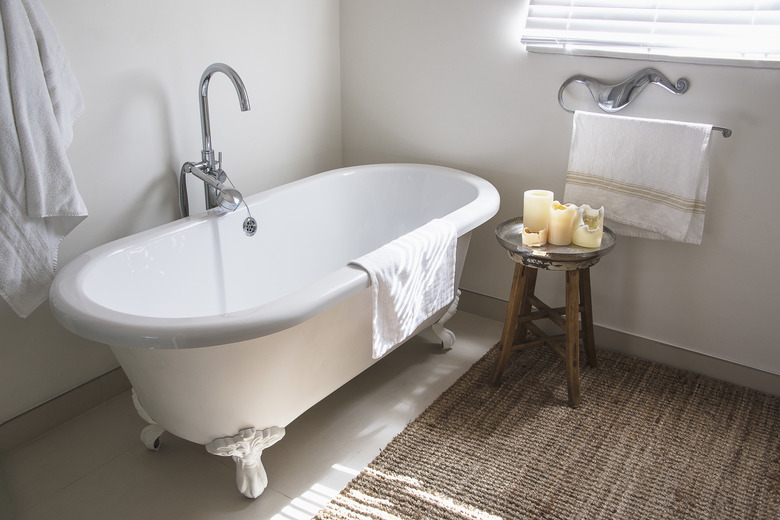What To Do When A Reglazed Bathtub Is Peeling
We may receive a commission on purchases made from links.
Older tubs and those made from cast iron are often coated in glazed porcelain, but even new tubs typically have polyurethane glaze on the surface. While glazes typically only last 10 to 20 years, a variety of issues may contribute to the glaze peeling well before that time. An adequately glazed tub is necessary to protect the surface from water damage and normal use.
So, what's causing your reglazed bathtub to peel? Here's what to know.
Why Is My Bathtub Peeling?
Why Is My Bathtub Peeling?
A variety of issues may lead to a bathtub peeling, but the most common ones are a chip in the surface, a poor refinishing, or even drastic temperature changes.
If there's a chip in the surface, water can seep underneath a new finish, loosening it further so peeling continues. Chips may be caused by dropping something heavy onto the surface or using harsh cleaners or scouring pads on the tub. Poor refinishing may also lead to peeling, such as when the glaze is not allowed enough time to cure or dry. The surface may also have not been properly prepared to fully absorb the glaze.
Sudden temperature changes from cold to hot water, high water pressure, and normal wear and tear also contribute to peeling or chipping. If it has been more than 10 years since the tub's last reglazing, normal wear and tear may be solely responsible.
How to Fix a Peeling Bathtub
How to Fix a Peeling Bathtub
Fixing a peeling bathtub is typically best left to a professional. An experienced repairperson can assess the extent of the wear and determine if a thorough cleaning, stripping, and reglazing is required. However, it's important to know what the process entails before you hire. Here's how a peeling bathtub is repaired:
- A refinisher masks the adjacent surfaces, opens windows and vents the bathroom for safety.
- Then, caulk will be removed along the tub's perimeter before applying a chemical stripper that has been allowed to set.
- A cleaner, which often contains an adhesion promoter to ensure a strong bond between the glaze and the tub, is applied and rinsed.
- Then, several coats of quick-dry primer mixed with a bonding agent are sprayed onto the surface.
- Once all layers have been applied, the glaze cures for at least 10 hours.
Should I Use a DIY Bathtub Glazing Kit?
Should I Use a DIY Bathtub Glazing Kit?
While DIY refinishing kits are available relatively inexpensively for cleaning and glazing, care must be taken to avoid yet another peeling and chipping incident. A kit's biggest advantages include low price and being able to reglaze the tub on your own schedule.
Proper stripping for adequate glaze adhesion requires plenty of scrubbing and working with very harsh chemicals, which can be hazardous. The refinisher or DIYer must wear a full-face respirator, goggles, and rubber gloves. The primer and topcoats also require precise mixing.
How to Clean a Reglazed Bathtub
How to Clean a Reglazed Bathtub
Proper cleaning and maintenance can maximize the life of glaze on a tub. Here are some tips on how to clean your tub properly:
- Avoid abrasive cleaners like scouring powders or products containing acid or white vinegar.
- Steel wool and other metal tools will degrade the finish as well.
- Experiment with extremely gentle cleaners until you find one that is just strong enough to properly clean the tub without wearing it down.
- Grease-cutting dish soap mixed with hot water works well for routine cleaning when scrubbed with a soft sponge or rag.
- For a deeper cleaning product, mix equal parts baking soda and ammonia. Gently scrub with a soft sponge or rag. Repeat as desired and rinse thoroughly with hot water to prevent baking soda buildup.
Tip
For tough stains on a reglazed tub, table salt with lemon juice can be sprinkled onto the surface. Rubbing a tiny amount of lemon oil on a clean rag works well as a shine booster and protective layer.
